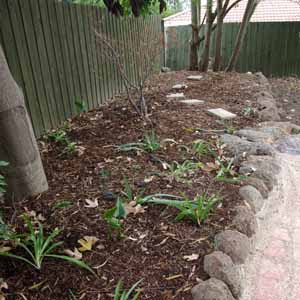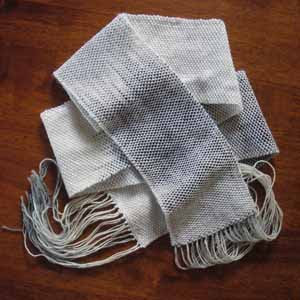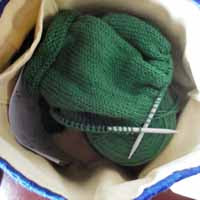I got to thinking about crochet the other day, after getting hold of the latest Interweave Crochet and feeling a bit underwhelmed. Something was bugging me about it. I flicked through and found myself thinking “yep, there’s the usual lacy shawl, wrap or blanket, bulky and shapeless jumper or cardy, whacky hat, knitted thing with crochet additions, man’s garment, textured thing with frilly bits, lacy ‘topper’, and felted things”.
Don’t get me wrong. There’s a lot to like. I’m currently feeling the slouchy hat love, so the Hot Cross Slouch Beret is tempting me. The Infinity wrap is cool in a way that appeals to my inner geek. The Eagle Pullover is perfectly manly. And the pattern I desperately want to try but am too inexperienced for is the Stone Path Hat.

So what was bugging me? It certainly wasn’t the lack of variety. Maybe it was the fact that so much crochet falls in the same old categories:
The lacy thing.
The granny square thing.
The chevron thing.
The felted thing.
The weird mathematical thing.
The thing with crochet chain woven through.
The thing that’s knitted then crochet added.
The bulky and/or crochet with big hooks thing.
But I don’t think that’s what’s bugging me. I’ve seen patterns using all these approaches that looked fabulous. Even granny squares. I thought a bit more. Then I looked at crochet patterns I disliked, in IC and elsewhere, and asked myself what really bugged me about some of them, and came up with a new list:
Frumpy and shapeless.
Old fashioned.
Wacky.
Hip & Groovy (or slutty).
Impractical.
Which are maladies that knitting patterns can suffer, too. It’s just that there are a heck of a lot more knitting patterns out there so there’s more good stuff to balance the bad.
I began to wonder if that was why the only garment I’ve ever crocheted (aside from accessories) was a costume. I’ve been wanting to crochet a proper, serious garment for a long time now, but never found a pattern I wanted to make so badly it was worth the effort of stretching myself and tackling the whole US/Aussie terminology conversion thing.
That, I think, was why it was bugging me. If IC kept putting out the same old thing, would I ever find a pattern so fabulous I just had to make it? Maybe I needed to widen my source of patterns.

First I dug up my only copy of Crochet Today! and examined their back issue online. There were definitely some garments there that sparked an interest. I think I’ll be hunting down some back issues.
I also happened to visit a Borders yesterday, and went a-hunting for crochet books. My usual rule is: there has to be three or more patterns I like before I’ll buy anything. Cool Crochet qualified, and then some. Here are some of the patterns I like:

There was a book with a rather ugly cover called Crochet Techniques that I passed over a few times, but I had time to fill and decided to see if it was a good reference book. Turns out it was, but not in the way I expected.
Inside are five sampler rug patterns. The samplers cover plenty of crochet techniques, so by making them you learn a lot about crochet and end up with an attractive rug at the end. (I think the colours in the hexagon rug are uninspiring, but it wouldn’t be hard to substitute with more attractive hues.) One of the rugs uses Tunisian crochet, and another explores ‘crochenit’.

Now, I’ve been thinking about knitting a sampler rug for a while now, but that’s not what tipped my interest. Sampler rug patterns are not hard to find, and I could always just make squares from the pattern in my stitch dictionaries. What made me tuck this book under my arm and take it to the counter was the fact it used Aussie/Brit terminology and was published in Australia. I’m of the opinion that trying to improve your knowledge of crochet using US terminology (if you were brought up with Aussie/Brit terms) is like trying to learn to drive while on holiday in another country. Far easier to learn to drive at home, and wait until you’ve got the knack of it before tackling driving in exotic locations.
I haven’t tried to follow any of the instructions or charts in Crochet Techniques yet, but the diagrams are clear and there are both written instructions and charts. The photos of any of the three more attractive rugs would have made a much nicer cover and the title doesn’t really get across the concept, but the concept is an interesting one and I’m glad I had the time to give the book a closer look. And in the last 24 hours I’v been doing a mental stash dive, trying to recall if I have some yarn to start sampling with.
There was some more pattern/magazine aquisition over the weekend, but it’s all about the knitting and I think this post is long enough. I’ll save it for another time.


















































